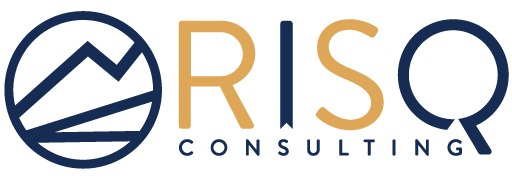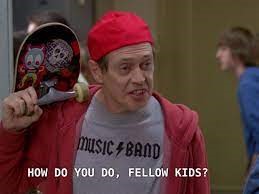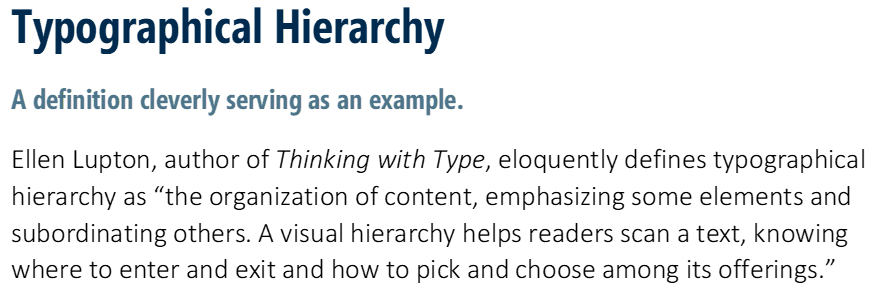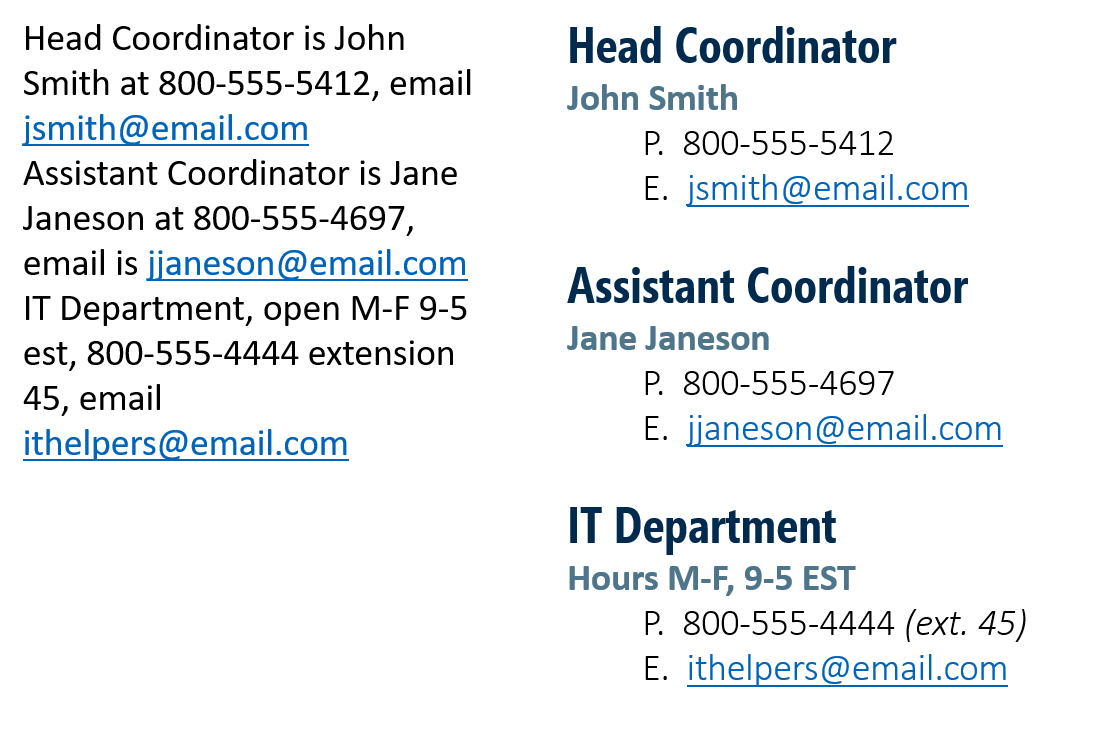Alcohol at Work, a Pro or a Con?
By Natasha Kwachka, Lead Account Specialist
I have always loved the controversial topics, the cans and cannots, the dos and the don’ts, that are engrained in our society. After all, discovering what went wrong to create the guidelines that were put into place is quite intriguing. For as long as people have been people, we have shifted away from things that once seemed perfectly normal, such as drinking at work. We have created stringent social guidelines determining what is acceptable and what is not. Now, don’t get me wrong, some of these guidelines have been for the better. Recently I came across an article that got my mind spinning around a pretty controversial topic for some; alcohol in the workplace.
Is having alcohol in your place of work something that should be allowed or is it truly a no-no? If alcohol is known to act, in some cases, as a sort of sedative, it can help certain people feel more at ease. In other cases, it could help people to feel more confident to express themselves publicly or socially. Let’s not pre-judge where this is going now. There can definitely be negative consequences of alcohol use. However, in some instances alcohol is known to very different affects. Certain people have expressed make them feel free to be themselves without the constant nag of certain societal anxieties.
Hear me out, so in the case that alcohol helps, could it be an effective tool in a work environment, especially in one where creative thoughts or ideas may be extremely valuable? Could it be that allowing someone to have 1-2 drinks over an 8-hour time span of a normal workday could actually positively impact the flow of ideas?
https://www.hrmorning.com/articles/should-you-allow-alcohol-in-your-office-pros-cons/
- Published in Blog
Dressed to Impress
By Bailey Penrose, Employer Services Account Manager
You can see the bottom of my face now. I’m vaccinated, and when the CDC came out with their updated guidance on masks earlier in May, I rubber banded the mask I was wearing off my face so fast it hit a wall. I still don the mask to visit stores or when around new people or even upon request, but it seems like we soon may be headed towards the mask horizon.
However, during this past year I also noticed there are some things I enjoyed about wearing a mask. Early on, I had splurged on some masks I really liked, with the idea that if they were fun and comfortable I wouldn’t mind wearing them as much. It made me happy that there was some wearable art on my face, that behind the funky pattern I didn’t have to monitor my expression, and that my face was warm in the winter months. I’m going to kind of miss those things.
The thing about masks, in connection with COVID-19 and beyond, is that we’re probably still going to be seeing them for the foreseeable future. People may decide to wear them if they’re out and about, while fighting a cold, or even just choose to wear them as an accessory. As mask wearing has become generally accepted on a global scale, I don’t imagine there will be a lot of pushback or vitriolic demands that someone take them off. It will become a voluntary item that people choose to wear or not wear.
This issue has also made me think a lot about work dress norms. Specifically, dress norms or policies in relation to team members who may choose to wear items of clothing or jewelry due to sincerely held religious beliefs. Now, I am in no way comparing a mask, which has been predominately utilitarian in nature, to religious garb, which is a personal choice and deeply felt. I think however, the newly universal experience wearing or not wearing an item of clothing (a mask) garnered a degree of attention and comment at work and abroad that not everyone had experienced before. With this new shared experience in mind, why not take second to review your office dress code?
For workplaces, a flexible dress code that hits the sweet spot of professional attire while being able to accommodate for a reasonable level of personal expression, including religious accommodation, can help employers on several levels. From a legal perspective, religious accommodation is protected by law under Title VII. From a recruiting and retention perspective, allowing for and protecting reasonable personal expression in the workplace will support diversity initiatives, create a more inclusive environment for team members, and attract applicants.
Please consider some of the examples below:
https://www.army.mil/article/242536/army_announces_new_grooming_appearance_standards
- Published in Blog
Thinking Critically
By Jessica Carlson, Employee Benefits Consultant
I was recently required to watch a video for my job. In the video, the presenter talked about how having a lack of critical thinking skills has become a major weakness due to API (application programming interface) influences. When you look at your social media feed, you’ll notice that what shows up reinforces your beliefs. Based on the articles that you interact with, the algorithms will show you items that stay within your biases. Purposeful curiosity is the way out. People need to ask deeper questions and be more critical in their thinking.
While I was listening to this video it got me wondering, why aren’t people thinking more critically? Why do we just believe what’s in front of us without asking any questions? Unless something lines up with an individual’s preconceived notions, they are not likely to put any extra thought into why. So, how do we fix this? I searched through many articles and the best one I could find that gives tips on how we can try to turn this around is “7 Poor Thinking Habits We Must Fix to Think More Critically”. Check out the link below:
https://wabisabilearning.com/blogs/critical-thinking/7-poor-thinking-habits
- Published in Blog
Don’t Forget to Break the Ice
By Ashley Snodgrass, Executive Account Manager
For so many employees, the thought of coming back to the office evokes a mixture of thoughts of excitement and anxiety. If you’ve been working from home for the past year, can you remember what it is like to be around other people regularly? Work has continued throughout the pandemic, but what about the social aspect of the workplace? In the beginning, many companies, including RISQ, jumped onto the ideas of virtual happy hours or other Zoom events, to try to keep the team spirit of comradery alive.
As you make plans for returning to work and normalizing the office again, consider integrating icebreakers into team meetings. For some employees, being isolated for such a long period of time brings a new sense of social anxiety to the workplace. Perhaps at the next staff meeting, start with a quick icebreaker to get ideas flowing and to help employees get reacquainted with each other.
I should clarify what I mean by the term icebreaker. If you’ve ever been to summer camp as a kid or a new age work conference as an adult, you may be off put by this term which can conjure up memories of embarrassing events, games that push physical boundaries, or discussions crafted to elicit an emotional response. In a professional setting, the best icebreakers are short and allow employees to determine how much or how little to share with the group. Keep it light, keep it professional, and let employees decide the level of participation with which they are most comfortable.
One way that RISQ has included icebreakers into our culture is with new employees. In the Before Times, we’d bring in bagels for a quick breakfast and icebreaker session in the morning. There’s nothing quite like getting to know your new coworkers by learning their name, job title, and what skills they bring to the team in the event of a Zombie Apocalypse.
This post was inspired by a master list of Ice Breakers I came across recently, from The Art of Noticing. I think the toughest part of trying to facilitate some type of Ice Breaker activity is coming up with something thought provoking, but lighthearted, to talk about. I’ve saved this resource to reference for the future, and I hope you find it helpful as well.
- Published in Blog
4 Reasons to Learn a New Language Even Though English is Taking Over as the Universal Language
By Aimee Johnson, Account Executive
According to Josh McWhorter, a Linguist and Columbia Professor, English is on its way to becoming the world’s universal language for better or for worse. There are currently more Mandarin speakers in the world, yet more Mandarin speakers are learning English then English speakers learning Mandarin. Additionally, by the end of the century, only a few hundred languages will remain of the current 6,000 languages spoken today.
So, why learn a foreign tongue even if you speak English?
- To embody or drink in a culture, you must control to some degree in which the culture is conducted.
- If you speak two languages, dementia is less likely to set in and you are likely a better multitasker.
- Languages are a lot of fun!
- It’s never been easier!
Interested in learning a new language? John recommends the lesser known Glossika’s innovative “comprehensive input” method.
Listen to John McWhorter’s alluring benefits of learning an unfamiliar tongue here: https://www.ted.com/talks/john_mcwhorter_4_reasons_to_learn_a_new_language?utm_source=linkedin.com&utm_medium=social&utm_campaign=social&utm_content=2021-5-06-cutdown#t-2744
- Published in Blog
Top 5 Cryptocurrencies to invest in May 2021
By Casey Kirkeby, Strategy Consultant
Cryptocurrency have seen their biggest boom in the last four years than any other currency out there. Bitcoin, the most popular and the most valuable, hit a record high of $63,000 per bitcoin in 2021 alone. There is still a lot of unknown risks out there on how to invest, what is trending, and how to convert coins to digital currency, so I thought I shed some light on what is trending for May of 2021.
I personally use Robinhood for most of my cryptocurrency investing but it has its limitations and there is a plethora of other platforms to use that are cryptocurrency only and have more capabilities but have fees. If you are a novice (like me) in the cryptocurrency trade world or an expert and hang out with Elon Musk from time to time, here are five trending cryptocurrencies to consider investing in for May of 2021:
- Binance Coin- current value in USD – $663.43
- Solana- current value in USD – $47.07
- Dogecoin- current value in USD – $0.4392
- Cardano- current value in USD – $1.32
- Ether- current value in USD – $3,376.34
These five cryptocurrencies show promising growth (especially Dogecoin) and I believe it’s safe to say that they are not going away. In fact, after Tesla invested $1.5 billion in Bitcoin, the owner of Tesla, Elon Musk, will start accepting Bitcoin as payment for electronic cars. Now get out there and start researching today!
You can learn more here- https://www.analyticsinsight.net/5-promising-cryptocurrencies-that-you-can-buy-in-may-2021/
- Published in Blog
What’s the Tea – Your Guide to Understanding Your Gen Z Coworkers
By Alison Nelson, Sales and Marketing Coordinator
Sometimes I’ll say a phrase at work and receive blank stares from my colleagues. It’s easy to forget that different generations have varying phrases and slang and, while the world focused on Millennials, Gen Z has slowly entered the work force. According to this article, Gen Z was born from 1996-2015. Having been born in ’96 myself, I’m 25 years old and have been at RISQ Consulting for nearly four years, making me a prime example of how the older members of Gen Z are already starting their careers.
If you find yourself working alongside a Gen Z coworker (and if you’re not already, it’s only a matter of time), you may find yourself a bit off-put by some of the things we say. Below are some common Gen Z phrases and terms, along with their definitions, so you can understand what in the world is being said.
*Say the below terms at the risk of aging yourself and embodying the “fellow kids” meme. Think of this more of a translation guide.
Phrase: What’s the tea?
Meaning: What’s the gossip? The equivalent of “what’s the skinny”
Term: Dead / 💀
Meaning: That’s funny, basically the new “lol” and cry laughing emoji 😂
Term: Bet
Meaning: They’re not trying to place a bet. It means “ok” and “yes”, some say that it’s short for “you bet”
Phrase: It’s the _____ for me!
Meaning: Calling out something you like or dislike. This phrase can be used positively, negatively, and ironically. More often than not, it’s used negatively as a comedic insult. For example “it’s the unibrow for me”
Term: Cap
Meaning: This means lying. It’s commonly used said like “no cap”, meaning “no lie”
Term: Salty
Meaning: Bitter
Term: A bop
Meaning: A very catchy song
Term: Slaps
Meaning: Something that it cool, often used to describe a good song
Term: Fire
Meaning: Something that is really cool
Term: Sus
Meaning: Suspicious
Term: Simp
Meaning: Someone who is trying to hard to impress another person. This is usually used negatively.
Phrase: Clap back
Meaning: A comeback to an insult
Phrase: Big yikes
Meaning: Bummer
Since slang is constantly changing, here are a few phrases that are now considered out of vogue:
- Adulting
- I did a thing
- VSCO girl
- I’m not crying, you’re crying
- The struggle is real
- Sooo this happened
- I’m just gonna leave this here
Before you start to change your lingo, throw away your skinny jeans, or switch to a middle part, it’s important to note that a key characteristic of Gen Z is our value of diversity. Inclusion is also an important value to this generation so I wouldn’t worry about trying to conform to the new norms or fit in. At the end of the day, the divide between the varying generations is smaller than it seems.
I hope you found this guide helpful and enjoy working with your Gen Z coworkers, I promise, we don’t bite.
- Published in Blog
Creating Healthy Boundaries
By Jessica Carlson, Employee Benefits Consultant
Do you have a hard time saying no to people? What if someone needs a simple favor or needs to borrow money? What about at work? Are you busy and someone you work with needs something done ASAP? How do you decide what takes priority?
Setting boundaries is essential, to healthy relationships with others and for your own mental health. You know what they say; lack of preparation on your part does not constitute an emergency on my part.
So, how do you draw healthy boundaries in both your personal life and your professional life? This is something that I have had to work on myself. Even when I have made clear what I want/need, people still push to get what they want out of me to the point that I have lied to or completely ignored them because I feel guilty for saying no.
Professionally, I find it much easier to say no. I am not worried about hurting someone else’s feelings. I know what my workload looks like and if I have time to assist with your project. I am willing to help and will prioritize what’s more important to complete right away, vs. what can wait a few days.
Healthy boundaries will help you make decisions that are best for you and not necessarily the people around you. They can also help to improve our self-esteem and build confidence. Here are a few ideas that can help with creating healthy boundaries at work:
- Prioritize yourself – Forget about other people’s feelings sometimes and give yourself permission to put yourself first. Your feelings are just as important as theirs are.
- Self-Awareness – When something or someone is making you feel guilty or stressed, try to figure out why it is happening. Is there any part of this situation that you can control to minimize those feelings?
- Start slowly – Everything takes practice. Begin with something that seems small and not threatening and build your way up to something more challenging. Do not start with something that would make you uncomfortable.
- Be flexible – It is important to have firm boundaries in most cases but sometimes if you are too rigid, there can be issues. You will occasionally want to reevaluate the situation and make adjustments if necessary.
- Set realistic expectations – Know your limits. This is important so that you do not over promise and under deliver. There are always going to be obstacles to any project that you are working on so it is important to choose flexible deadlines. Under promise and over deliver that way it seems that you are going the extra mile.
- Communicate – If you are overloaded at work, give yourself permission to say no. If there is no way you are going to finish the project that you are already working on by the deadline, it is ok to say no to taking on additional tasks. Communication is the key to avoiding future misunderstandings.
- Delegate – If you do not have time to complete something ask yourself; is this project better completed by someone else? Is there another colleague that has less of a workload and may be better suited to finish this project?
- Be prepared – You will experience pushback. Building healthy boundaries is not done overnight. Sometimes people are completely oblivious that you are busy and focused, demanding your attention. This can be a good time to let them know when it is an acceptable time to interrupt you and set realistic expectations.
In your attempt to create healthy boundaries, whether it is in your personal or professional life, you discover that people continually and combatively ignore or discount your boundaries it may be time to move on. You may be in a toxic environment/relationship and the only thing that you can truly control is you and your mental health.
- Published in Blog
Long Live the Hierarchy
By Jennifer Outcelt, RISQ Consulting Account Specialist
I love hierarchy, don’t you? It’s just so much nicer when you can easily separate the important from the masses. Clear leaders guiding your mind is the only way to maintain order. Without hierarchy countless systems would devolve into chaos… What’s that? You think I have extreme political views? Oh wow! I’m not talking politics! No, no, no, no, no. I’m talking about Typographical Hierarchy, silly! You know, the visual hierarchy you see in written content that helps your mind separate titles, from headings, from subheadings, from main body text.
Gosh, I’m so embarrassed for causing that confusion. Let me make it up to you by explaining a bit more about what typographical hierarchy is.
You may have noticed the structure of this post changed a bit there. I hope you weren’t too disoriented. In fact, you were probably finally oriented! BOOM! You my friend have been typographically hierarchized. First, you saw big, bold, blue text that told you exactly what the rest of the text was about. Then, you saw smaller, light-blue text that narrowed down the focus of the rest of the text. Finally, you saw the actual text. The meat of it. And now you’ve learned something.
In all likelihood you’re already familiar with this text structure. You see it every day. It shows up in magazines, websites, advertisements, newspapers, and pretty much any industry with the slightest graphic design budget. Maybe you recognize it but can’t put your finger on why it’s so effective. Sure, I could have buried that definition inside a big paragraph for you, but how would your eyes have known where to look for a definition? This structure is even more helpful when you have a variety of subjects appearing on the same page. In an online retail situation, the product thumbnail serves as the title, the product description as the heading, and the price as the subheading (or heading if you’re as budget driven as me). Which of these two contact lists would you rather sift through?
I’d put money down you prefer the one on the right. Why? Because it’s easy to find exactly what you want and we like being lazy. Good typographical hierarchy works hard so your brain doesn’t have to. That’s what I call a good tool.
If you want to learn more about typographical hierarchy from someone much smarter than I am, then check out this site about the book Thinking with Type. If it piques your interest, then I recommend reading the whole book. It’s a truly fascinating read for those who like to look behind the green curtain. I just love typographical hierarchy, don’t you?
- Published in Blog













